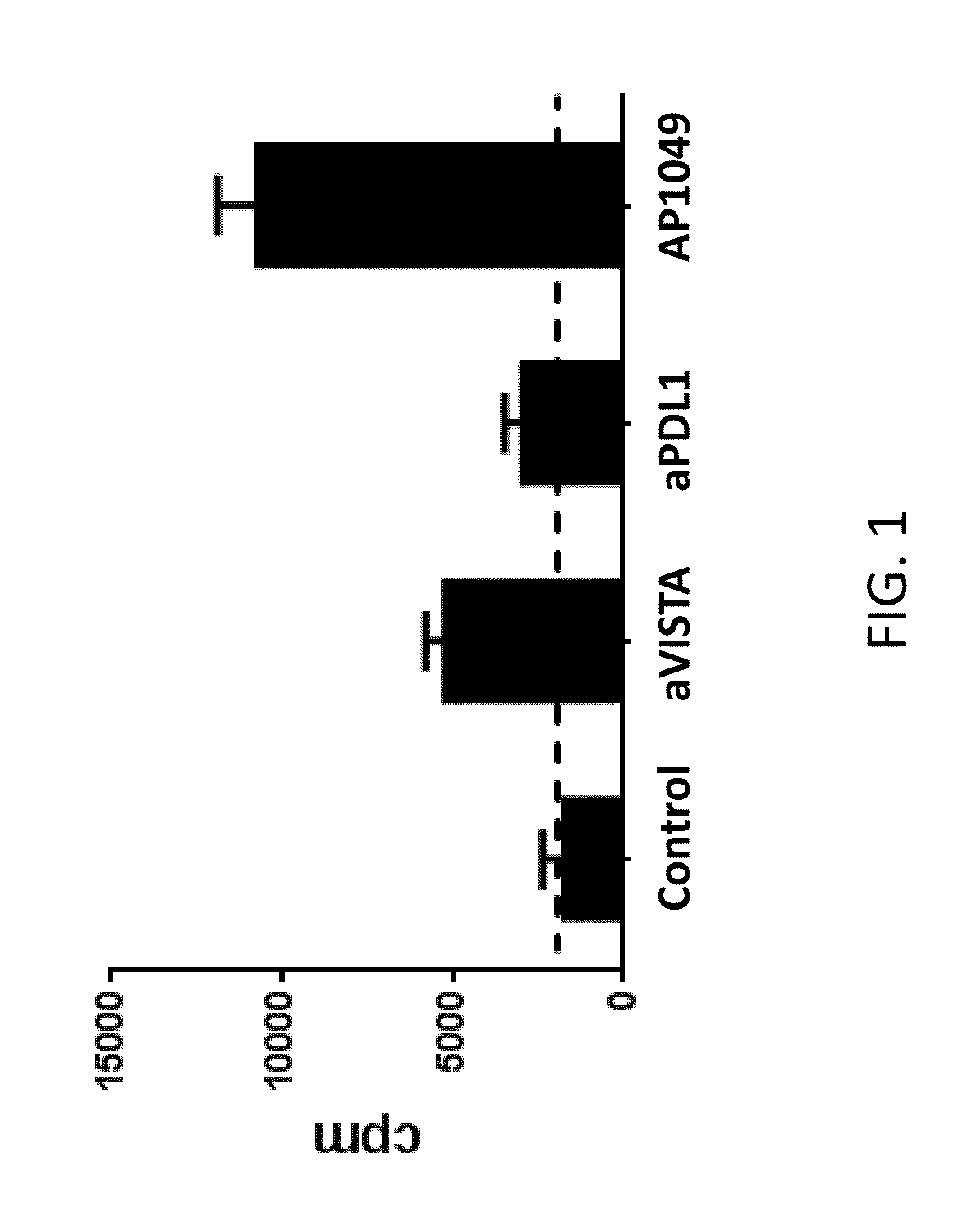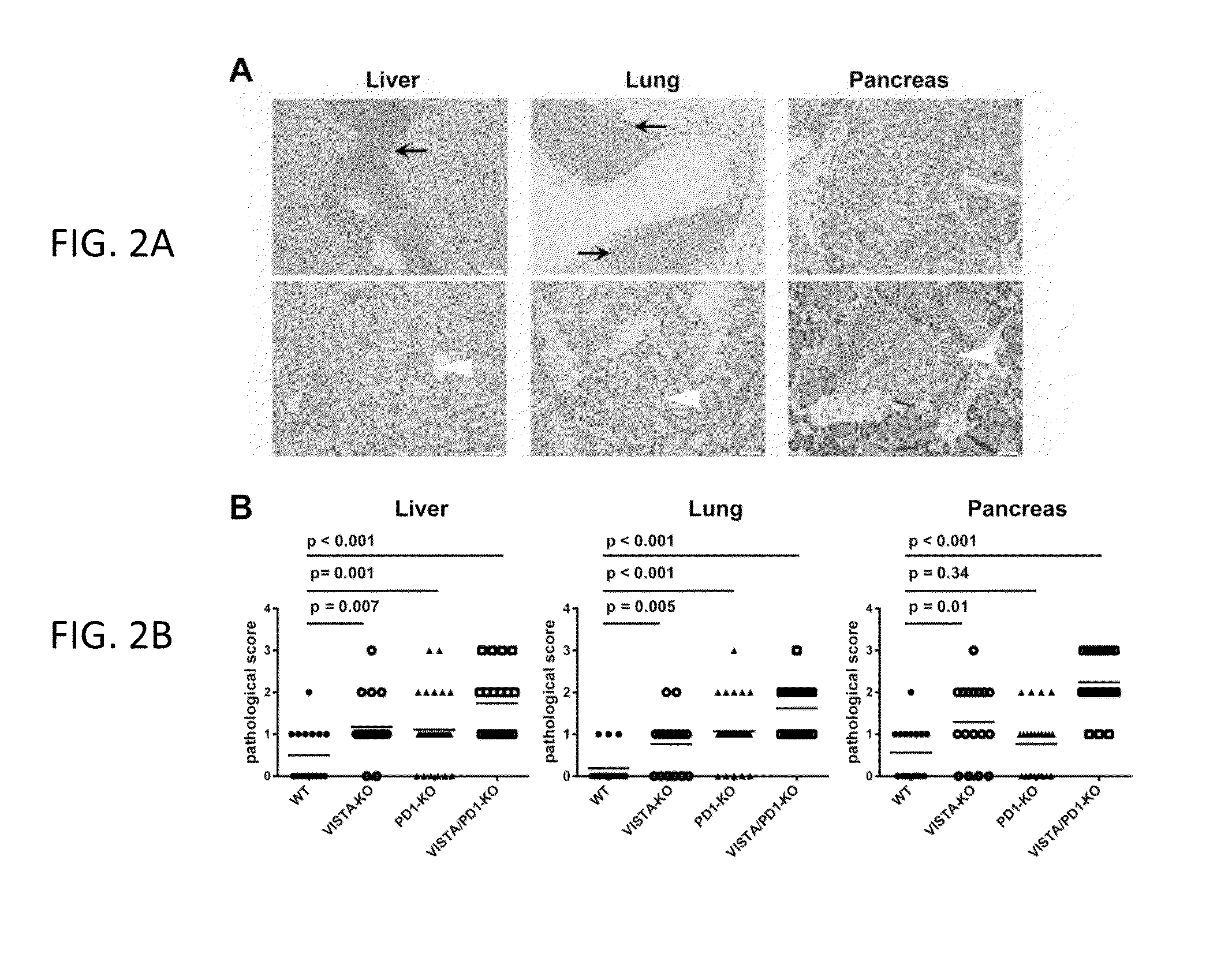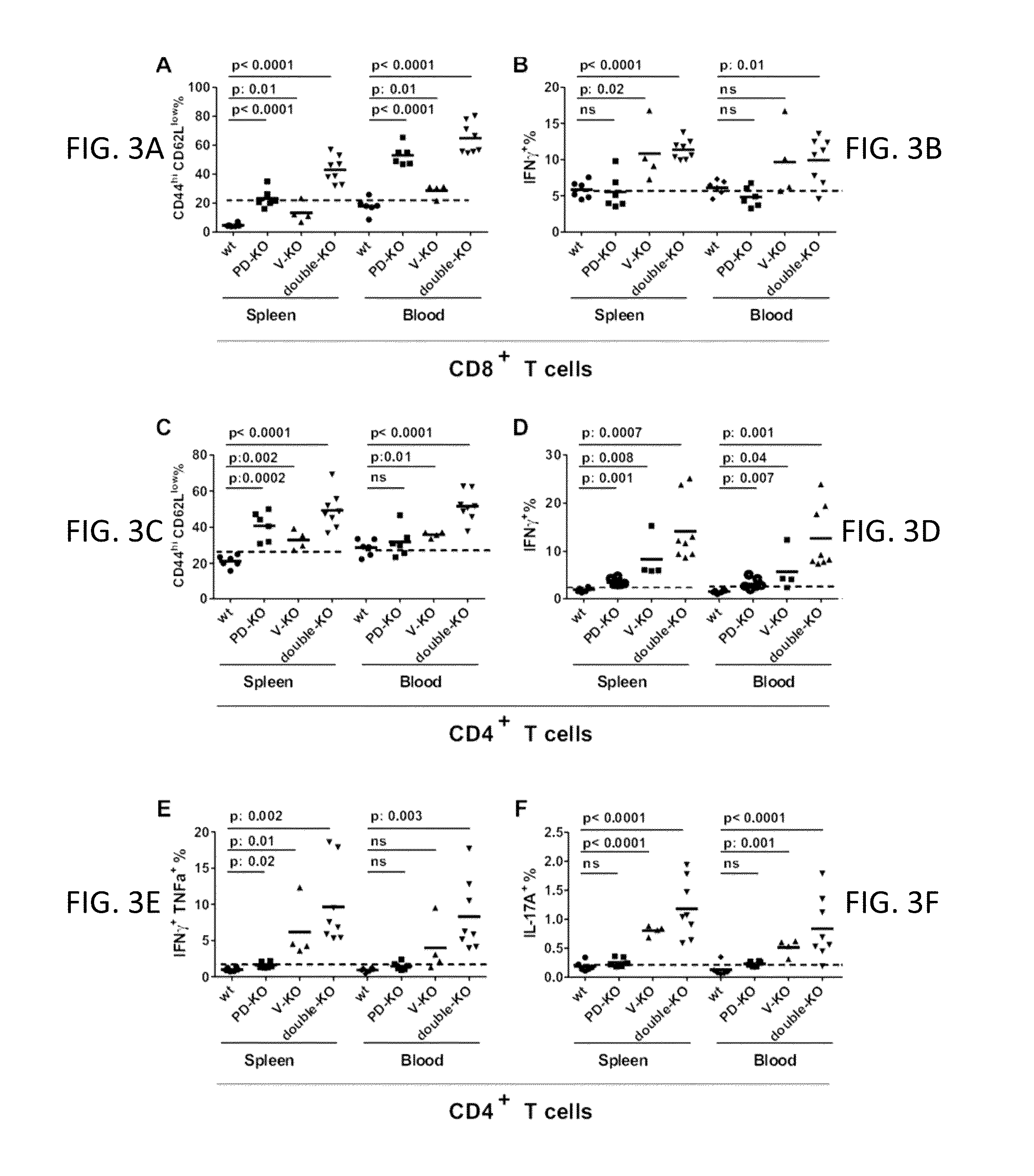VISTA Antagonist and Methods of Use
a technology of vista and antagonist, applied in the field ofvista antagonist and methods of use, can solve the problems of systemic autoimmune diseases, inability of ctla-4 ko mice to adequately control inflammation,
- Summary
- Abstract
- Description
- Claims
- Application Information
AI Technical Summary
Benefits of technology
Problems solved by technology
Method used
Image
Examples
example 1
Enhancement of T Cell Proliferation
[0177]VISTA+CD11b+ monocytes were enriched from naïve splenocytes using CD11b magnetic beads (Miltenyi). VISTA+CD11bhi MHCII+ myeloid APCs were FACS sorted, irradiated (2500 rads), and used as antigen-presenting cells to stimulate OT-II transgenic CD4+ T cells in the presence of OVA peptide. Control-Ig, monoclonal antibody specific for VISTA and PD-L1 (30 μg / mL), or VISTA-specific peptide (100 μg / mL) were added as indicated. Cell proliferation was measured by tritium incorporation during the last 8 hours of a 72-hour assay. This analysis indicated that T cell proliferation was enhanced in the presence of VISTA or PD-L1 neutralizing monoclonal antibodies, or the AP1049 peptide (FIG. 1). In fact, the AP1049 peptide stimulated T cell proliferation much better than either of the monoclonal antibodies, indicating that the peptide possesses strong antagonistic activity against VISTA.
example 2
Enhancement of T Cell Proliferation
[0178]This example relates to the experiment in FIG. 2. Histological analysis of aged VISTA KO, PD-1 KO, and VISTA / PD-1 double KO mice. Necropsy was performed on 12 months old WT (n=16), VISTA KO (n=15), PD-1 KO (n=28), and VISTA / PD-1 double KO (n=25) mice. Organs were fixed, paraffin embedded, sectioned, and stained with H&E. Two representative H&E sections from lung, liver, and pancreas of the VISTA / PD-1 double KO mice were shown in (A). Clusters of tissue-infiltrating leukocytes were marked with black arrows. (Top row) Areas of necrotic tissues were marked with white arrows (Bottom row). All images are of 200× magnification. Scale bar: 50 microns. The inflammatory state of the tissues was evaluated based on a semi-quantitative method that scores the level of the leukocyte infiltration and tissue necrosis (B).
example 3
Spontaneous T Cell Activation in the VISTA KO, PD-1 KO, and VISTA / PD-1 Double KO Mice
[0179]This example relates to the experiments in FIG. 3 showing spontaneous T cell activation in the VISTA KO, PD-1 KO, and VISTA / PD-1 double KO mice. Splenic T cells were collected from age and gender-matched 6-7 months old WT (n=6), VISTA KO (n=4), PD-1 KO (n=6), and VISTA / PD-1 double KO (n=8) mice. The percentages of CD8+ and CD4+ T cells with activated phenotype (CD44hi CD62Llo) were quantified by flow cytometry. T cells were stimulated ex vivo overnight with soluble anti-CD3 / CD28 mAbs, and their cytokine production (i.e. IFNγ, TNFαβγ and IL-17A) was examined by intracellular staining. CD8+ T cell phenotypes were shown in A and B. CD4+ T cell phenotypes were shown in C-F. Representative results of at least three independent experiments were shown.
PUM
| Property | Measurement | Unit |
|---|---|---|
| pH | aaaaa | aaaaa |
| composition | aaaaa | aaaaa |
| NMR | aaaaa | aaaaa |
Abstract
Description
Claims
Application Information
 Login to View More
Login to View More - R&D
- Intellectual Property
- Life Sciences
- Materials
- Tech Scout
- Unparalleled Data Quality
- Higher Quality Content
- 60% Fewer Hallucinations
Browse by: Latest US Patents, China's latest patents, Technical Efficacy Thesaurus, Application Domain, Technology Topic, Popular Technical Reports.
© 2025 PatSnap. All rights reserved.Legal|Privacy policy|Modern Slavery Act Transparency Statement|Sitemap|About US| Contact US: help@patsnap.com



